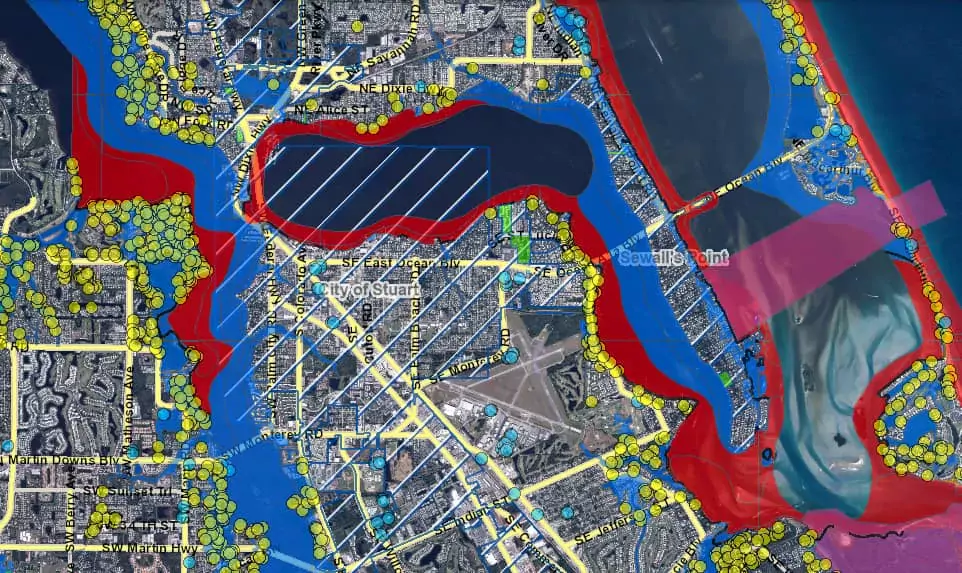Overview
It is important to build responsibly and safely. Any new structure or improvement to a structure, whether it is an addition, alteration, re-roof, etc. must have a building permit prior to the start of construction.
All applications to build in a Special Flood Hazard Area (SFHA) will not only include building department review but also a floodplain review performed by the Floodplain Coordinator, Floodplain Administrator or designee. This review is to ensure compliance with FEMA regulations, Martin County's Flood Protection Ordinance, Martin County's Building and Housing Regulations and Florida Building Code Requirements.
During this process, if an improvement to the structure is deemed to be substantial, it is then required that the applicant demonstrate the structure meets the current Florida Building Code requirements, County codes, and FEMA standards and regulations. These regulations are in place to protect both people and buildings.
It is required that the lowest finished floor of any new or substantially improved structure located within a Special Flood Hazard Area be a minimum of 1-foot above the Base Flood Elevation (BFE), which is found on the Flood Insurance Rate Map.
This also applies to attached garages, enclosures, crawlspaces, and any machinery servicing the building. Parking, storage, and building access areas that are not habitable spaces may be located below the BFE, only if flood openings are present or the structure is floodproofed (non-residential only).
While structures located within a V Zone are also required to be built a minimum of 1-foot above the BFE, they must also be protected from the impact of waves, hurricane force winds, and erosion.
A V Zone Design Certificate must be prepared by a professional engineer or architect that certifies that the design and planned methods of construction meet NFIP requirements. This certificate is required prior to permit issuance.
Floodproofing is acceptable for non-residential buildings in Special Flood Hazard Areas; however, there are certain requirements to be compliant with regulations that also include a Floodproofing Certificate. For more information, contact the Floodplain Coordinator.
All new or substantially improved structures will require a finished construction Elevation Certificate which must demonstrate compliance. This will be required prior to receiving a Certificate of Occupancy or Certificate of Completion.
Always get a permit before you build and work with a State of Florida licensed contractor.


